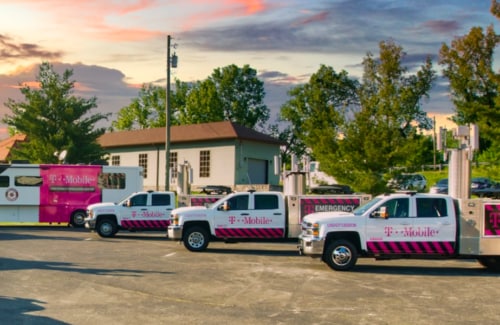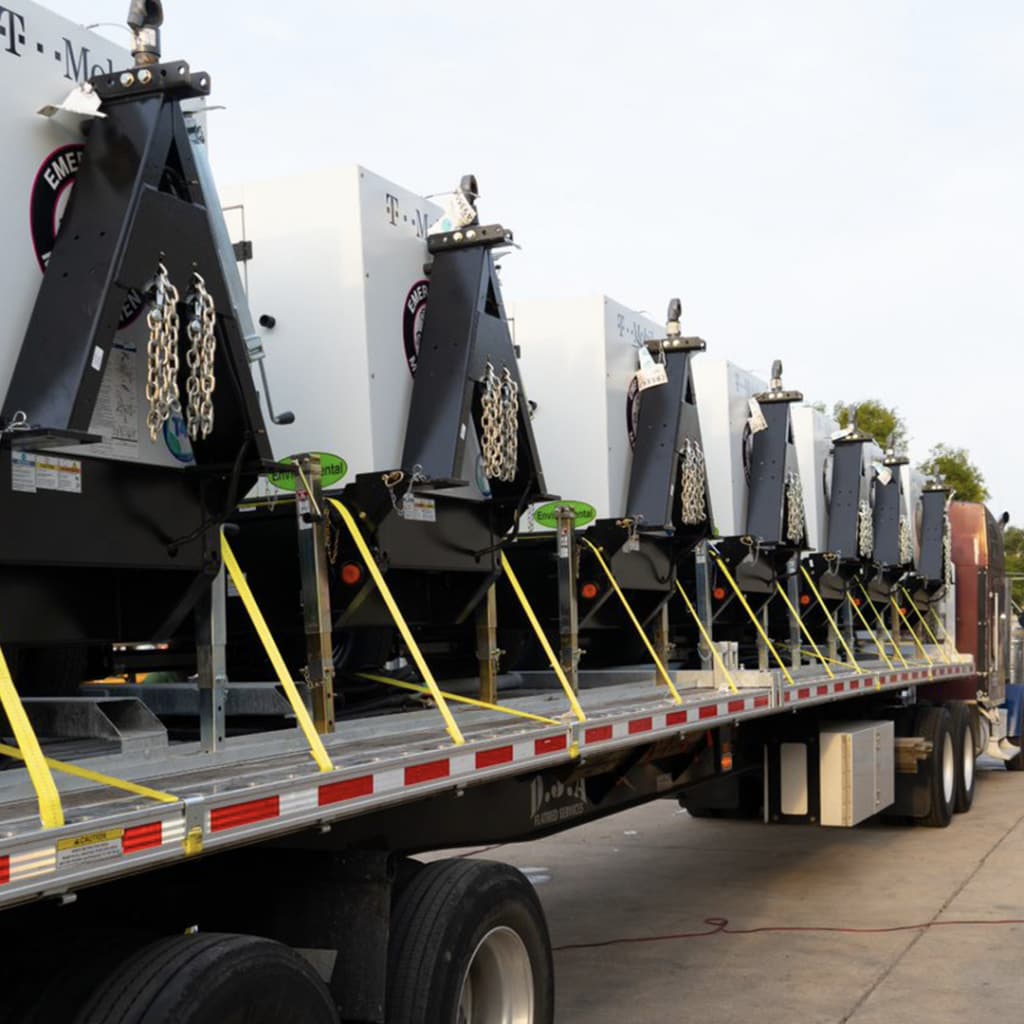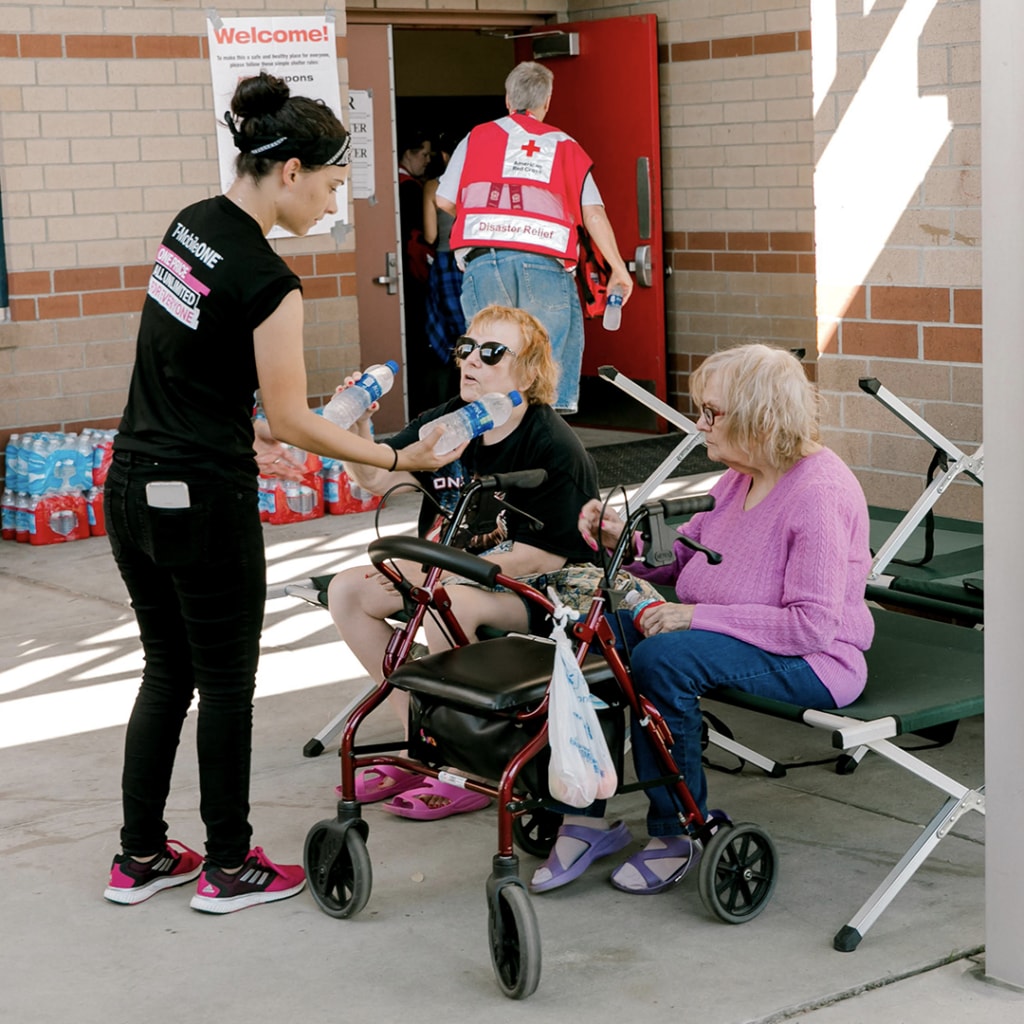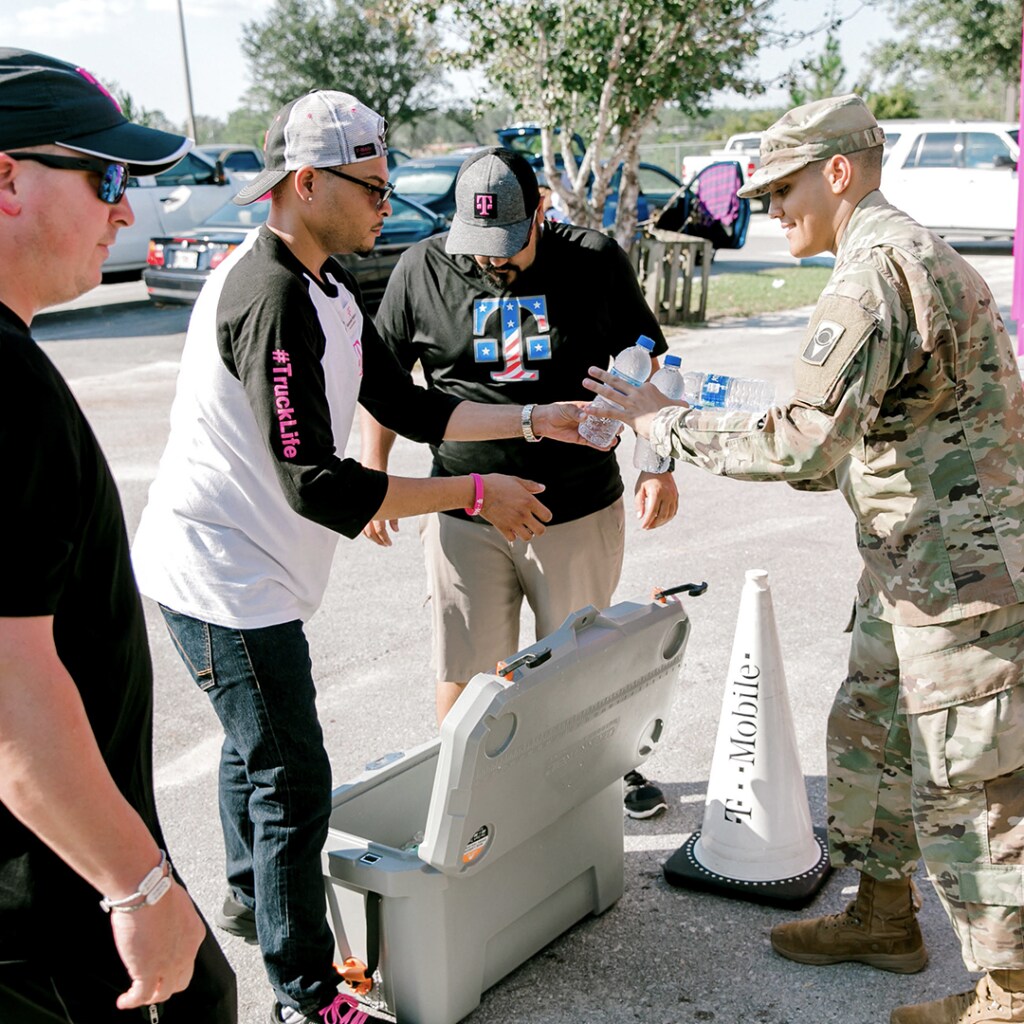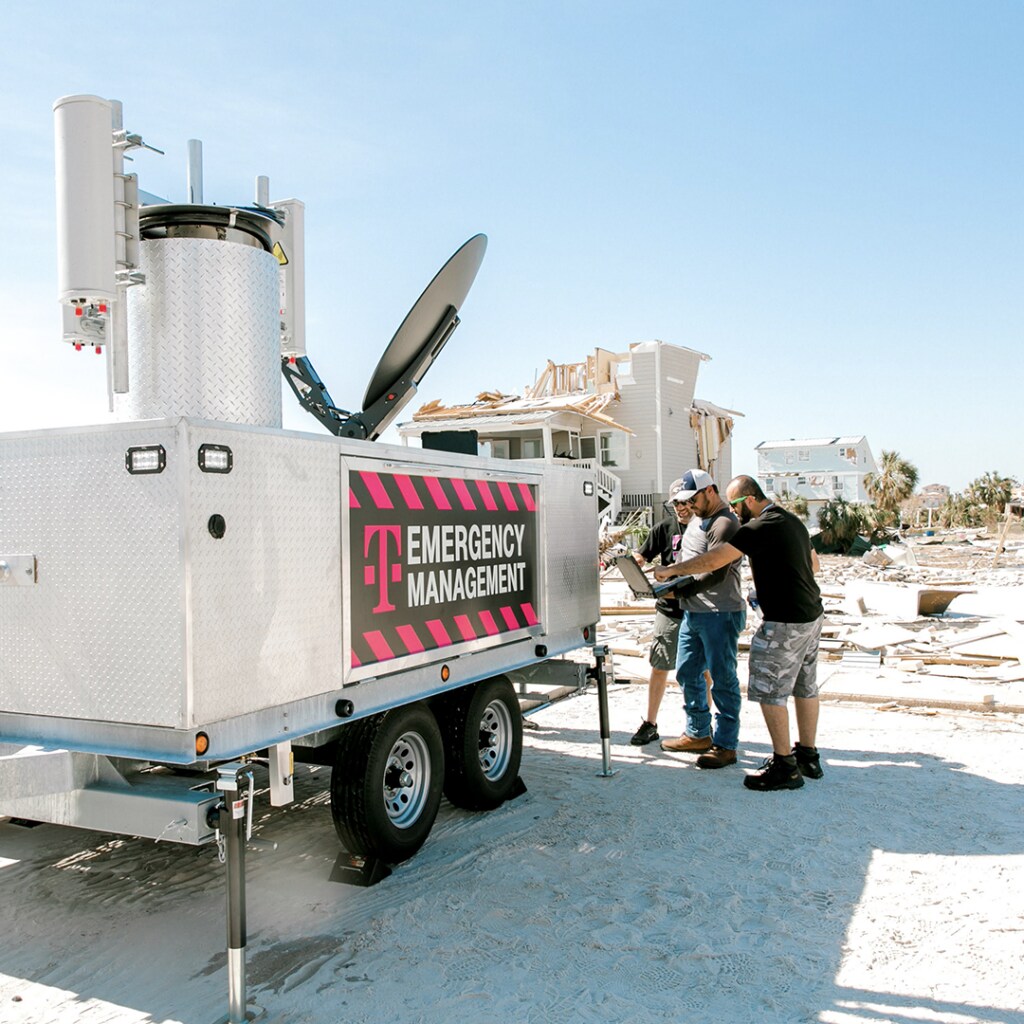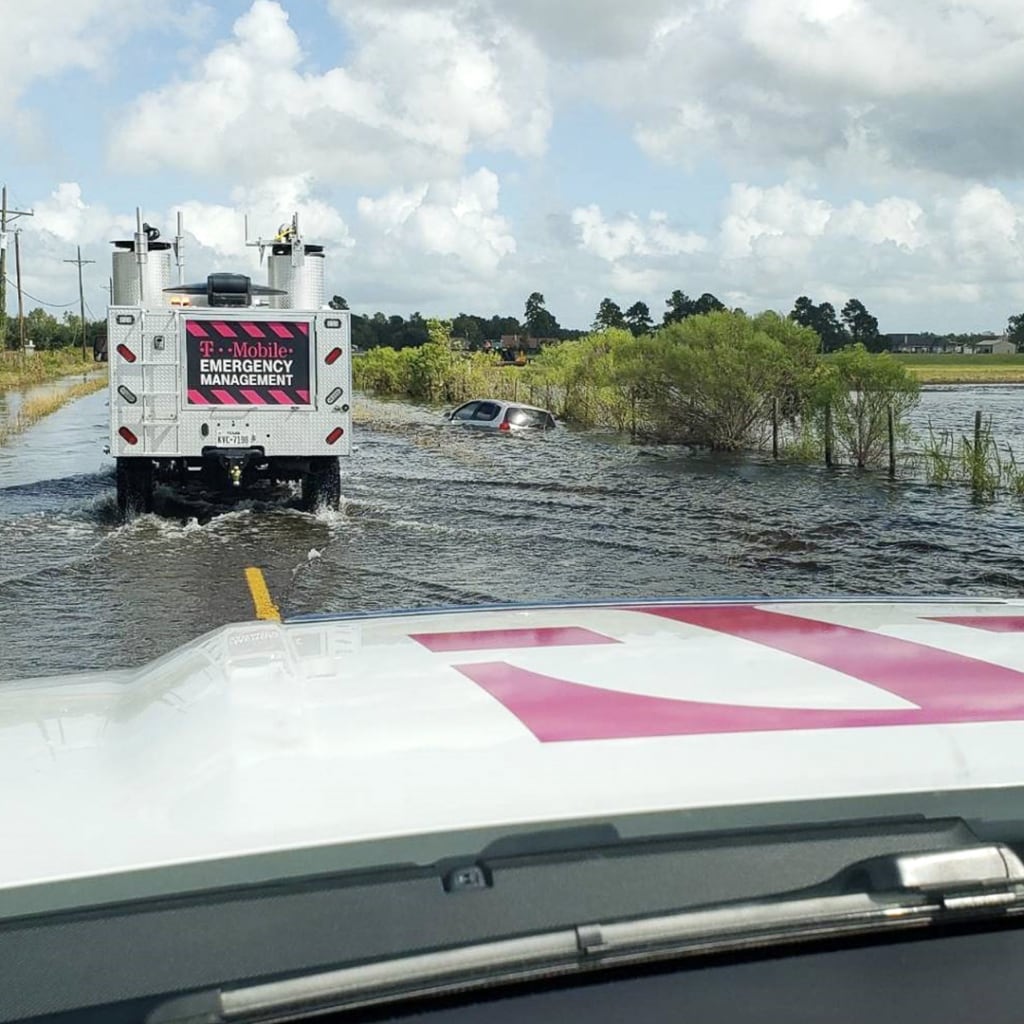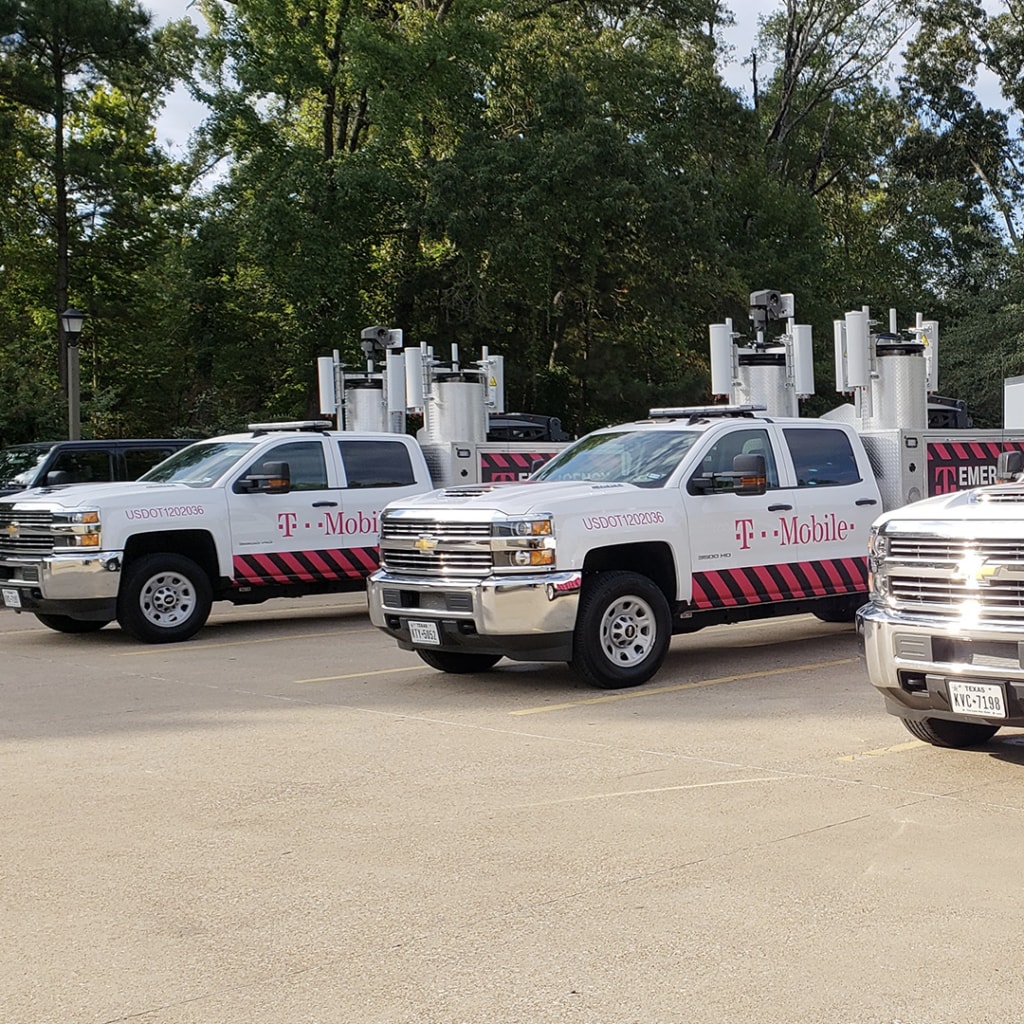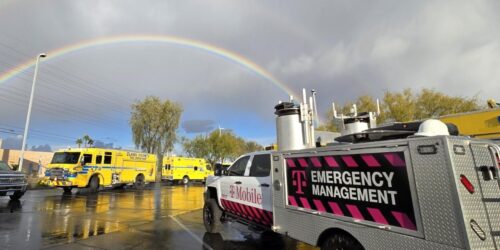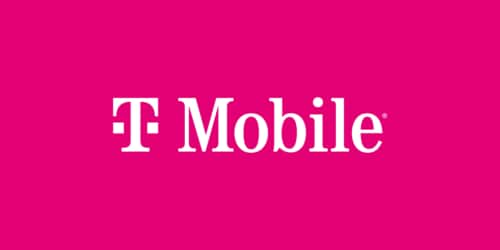As the 2020 hurricane season approaches, T-Mobile is more ready than ever to keep our customers connected.
Hurricane season is nearly here — officially running from June 1 through November 30 – and we know we must be ready to navigate the impacts of the season. We hope that this year our communities will be spared from the devastation of recent years’ storms, but we can’t predict what lies ahead so preparation is always critically important.
And currently, as people adjust to life during the COVID-19 pandemic, we know that this year’s hurricane season may be unique as T-Mobile and Sprint customers will rely on our teams and networks to maintain the important connectivity that is helping them work, learn and continue to communicate with loved ones during the various stages of the current shutdown.
As we do each year, we continue to work with internal and external partners, including the National Weather Service to monitor all potential storm activity and prepare our response plans.
In the meantime, we’ve taken important steps over the past several months to prepare to respond to hurricane impacts, including making considerable investments in network hardening and expanding our response fleets and relief teams.
So, we are better positioned than ever before, with our combined T-Mobile and Sprint resources, to quickly respond and support our customers in communities that are most affected by hurricanes.
Prepared
We take our natural disaster preparation very seriously and there are a number of tried and tested strategies that T-Mobile uses to make sure we are ready for any situation:
- Backup Generators are located at all of our T-Mobile and Sprint Wireless and Wireline Switch, Point of Presence (POP) and fiber regeneration site locations. This enables these sites to run for multiple days when power disruptions occur.
- Investing in operational readiness by adding thousands of new backup generators at our sites in hurricane prone areas making investments and improvements to backhaul systems as well as more advanced relief and recovery tools.
- Testing our T-Mobile and Sprint networks’ backup and response systems including improving our plans that allow us to quickly coordinate and mobilize to support our customers and their communities. In addition, we maintain and test all our backup generators on a regular basis.
- Practicing our response plans with hurricane preparedness exercises alongside other industry emergency management personnel that focus on the unique challenges each region may face during a disaster event and improve coordination and collaboration with state and local government agencies across in disaster prone areas.
- Monitoring our network traffic demands and weather impacts via our 24/7 Network Operations Centers (NOCs). This year, due to COVID-19 we have 100% of our NOC teams working from home and these technicians and engineers haven’t missed a beat in keeping our customers connected.
Ready to Respond
This year, following our merger with Sprint, we have further increased our Network emergency response capabilities and now have more resources ready to quickly support hurricane-prone communities after storms.
- Increased the size of our fleet of rapid response vehicles. We have doubled the size and capabilities of our emergency management fleet of satellite enabled vehicles, including mobile command centers, Cells on Wheels (COWs) and Cells on Light Trucks (COLTs). These vehicles can drive to impacted areas and help restore connectivity. We have also significantly increased the number of portable generators that can quickly restore power to our tower locations where permanent generators are not possible.
- Expert trained technicians, engineers and community relief teams and trucks are proactively deployed to ensure the right people are where they are most needed upon hurricane impact and that hard hit communities not only have minimized service disruptions but also know T-Mobile is there to support them with charging stations and much-needed personal supplies.
Managing Service Interruptions
Even with the measures we take to prepare our networks and with our increased capacity and ability to swiftly take action, there is still the potential for power outages and other communication service interruptions.
If your mobile service is interrupted or spotty immediately following a hurricane, we recommend customers try the following:
- If you have home broadband and power but no mobile service, try Wi-Fi calling, which allows T-Mobile and Sprint customers with capable devices to text and make and receive voice calls via any capable Wi-Fi connection. IMPORTANT: If you have to call 911 using Wi-Fi, be sure to give your address to the operator.
- If you have a connection to the T-Mobile and Sprint networks, keep calls to a minimum and as short as possible. This helps reduce the load on our network so others can get through.
- If you are a Sprint customer on the Sprint network, you can roam on the T-Mobile network if the Sprint network is impacted and T-Mobile is not.
- Send a text instead of making a call. Text messages get through easier during times of congestion.
How Customers Can Prepare
There are a range of useful steps customers can take to prepare ahead of a storm and help themselves stay connected. We recommend the following:
- Make a disaster kit! Include things like batteries, snacks, water, first aid kit, flashlight and device chargers.
- Update your family, friends and emergency services contact numbers. Make sure they’re saved and backed up or written down someplace accessible.
- If you’re planning to evacuate, let your family and friends know your evacuation plan, where you’re going and how to reach you.
- Subscribe to local authorities’ text alerts or connect with local authorities’ social networks to learn about new developments before, during and after a disaster.
- Keep your mobile devices fully charged! Have charging cables handy and consider investing in a car or portable charging device.
- Protect your technology with waterproof re-sealable plastic bags.
- Download emergency-assistance apps from the Red Cross and FEMA.
- Make sure your phone supports Wireless Emergency Alerts and that you have enabled notifications on your device. Visit www.t-mobile.com/wea for details on how to set up alerts on T-Mobile and Sprint devices.
- Set up Wi-Fi Calling on your phone. For Apple phones, go to Settings > Phone > Wi-Fi Calling; and for Android phones, go to Settings > More Connection Settings > Wi-Fi Calling.
More Information
There are many options for customers and the community to stay up to date on response and recovery efforts:
- Check the T-Mobile Newsroom.
- Follow us on Twitter at @TMobile and @Sprint.
- Follow T-Mobile President of Technology Neville Ray on Twitter.
- Call 611 from your T-Mobile or Metro by T-Mobile handset.
- Sprint customers can call 888-211-4727
- Get the latest storm forecasts online from NOAA’s National Weather Service and the National Hurricane Center.
- Read more about how T-Mobile prepares for and responds to disaster events at the T-Mobile website.
*Wi-Fi Calling: Capable phone and Wi-Fi connection required; may decrement plan minutes. Most devices will not transition between Wi-Fi and the wireless network. See your device’s User Manual and selected service for details.

